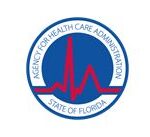
 Earlier this year we shared our thoughts on The Tax Cuts and Jobs Act’s provisions related to the healthcare industry. Physicians should plan for the potential short-term and long-term financial impact of these changes on their practices.
Earlier this year we shared our thoughts on The Tax Cuts and Jobs Act’s provisions related to the healthcare industry. Physicians should plan for the potential short-term and long-term financial impact of these changes on their practices.
Changes in QBI have limited benefits for physicians. That makes planning even more important.
Many physician practices are structured as pass-through entities, which may enable their owners to qualify for a new tax deduction – depending on income level.
Pass-through entities include subchapter S corporations, partnerships and some limited liability companies, but the benefits are severely limited for “specified service trades and businesses” (SSTB), including physicians. Owners of qualifying pass-through entities will receive a 20% deduction on “qualified business income” (QBI), effectively reducing their maximum effective tax rate from 39.6% in 2017 to 29.6% in 2018. But this deduction is limited for medical professionals who make over $157,500 (single filer) or $315,000 filing jointly. For those with more than $207,500 for individuals and $415,000 for joint filers, the deduction starts to phase out.
Healthcare professionals with incomes above the phase-out thresholds mentioned above will not be eligible for the 20% pass-through income deduction. In some cases, higher-earning physicians could even see a net increase in their 2018 taxes resulting from other changes in the new income tax law.
As a result of this tax law change, some owners of pass-through entities may consider changing their business tax structure from a pass-through to a subchapter C corporation. However, you should consult with your tax advisor and attorney before making any changes to your business structure or tax election status. There are pros and cons to consider.
The best planning strategy may be to maximize your profits.
Healthcare industry trends such as changing reimbursement models have been making it more and more challenging for physicians to run a profitable practice. With uncompensated care added to the equation, physician practices will have to make some tough decisions regarding payment models.
But a medical practice is a business. Assessing your performance at year-end and setting up the right processes and reporting as you begin the new year can help you turn data into actionable insights that can improve your profitability.
As 2018 draws to a close, consider these questions:
1. What are the key performance indicators in our business? Daily production, collection metrics, and claims status with different health plans might be some of them. Can you compare them across offices, practice groups and down to the individual level? And what about more subtle factors like practice mix?
2. Throughout the year, does management have access to the trends in these KPIs, so course corrections can be made, or improvement plans implemented?
3. Does your internal accounting staff have the skills, tools and time to provide the data you need to run your business on a real-time, proactive basis?
Before 2018 comes to a close, talk to your advisors about options to improve your business performance using your data in a more proactive, powerful way.
Other tax changes
In addition to the changes in the pass-through income deduction, the repeal of the ACA individual mandate will affect the vast majority of physician practices.
Contact your tax advisor to learn more about these and other provisions within the new tax law that could affect you or your practice.

























